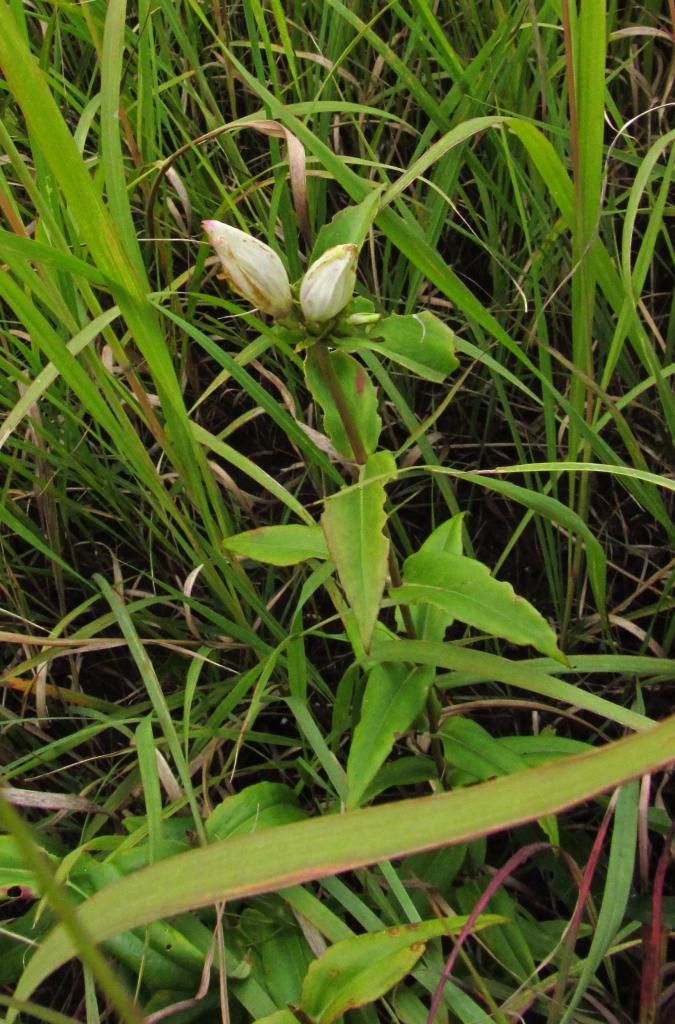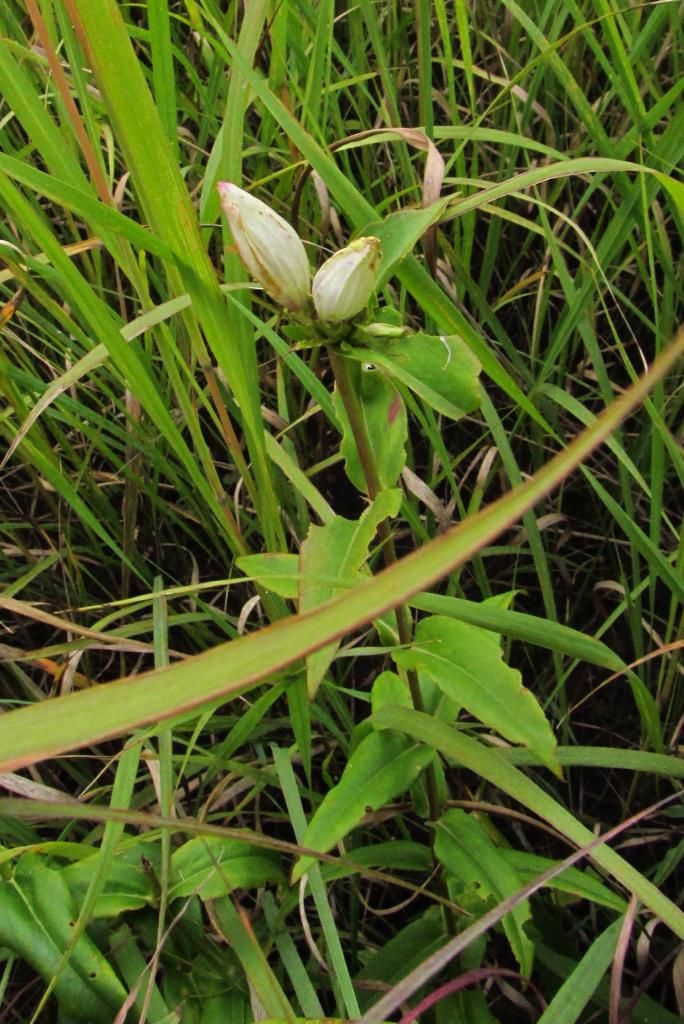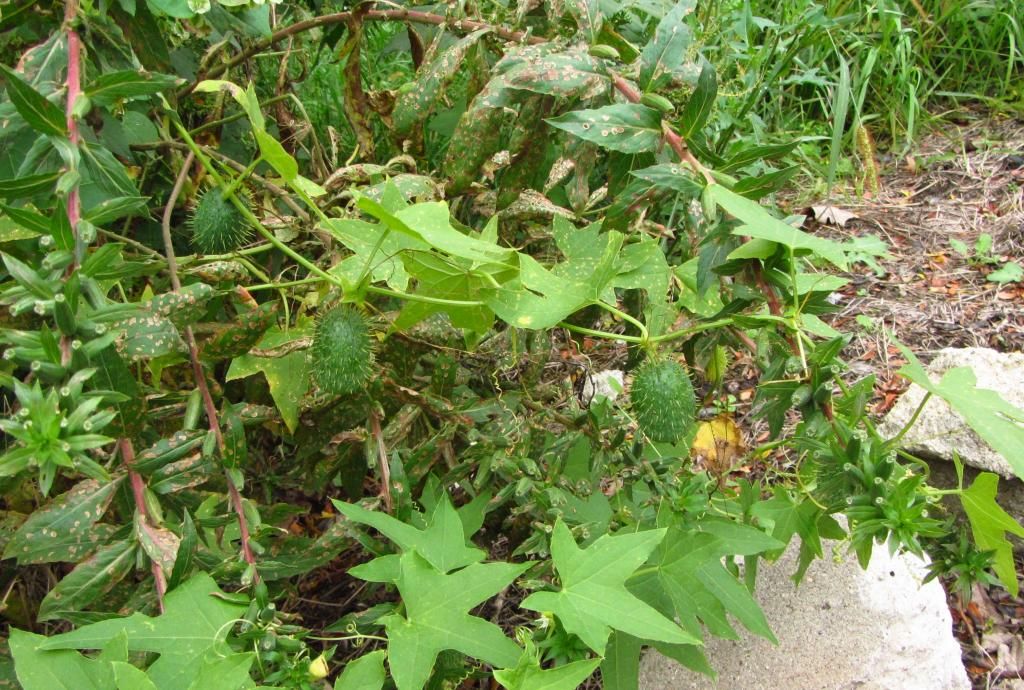Some late summer wildflowers are tall enough be seen from a mile away, some catch your attention with masses of flowerheads, and some make up for being low to the ground with brilliant-colored blossoms. Today’s featured wildflower is none of the above.
Plain gentian (Gentiana alba) is native to much of the Midwest, including Iowa. Also known as cream gentian, yellow gentian or sometimes white prairie gentian, it “grows in well drained soils of moist meadows, prairies and open woods with full sun to partial shade.” The plant usually is only 1 to 2 feet tall, and the white blossoms are either closed or barely open at the ends. According to the website of the Eloise Butler Wildflower Garden in Minnesota, “When the corolla lips are closed or just partly open it takes a large bee to force them apart to reach in for the nectar.”
I would have walked right past the plain gentian amid the taller grasses in a prairie patch at Whiterock Conservancy last month. Fortunately, Eileen Miller showed me some flowering plants. Only a couple of my pictures came out, and I’ve enclosed those below. I don’t know what kind of insect chewed up some of the leaves; mammalian herbivores are thought to avoid plants in the gentian family.
As a bonus, I included a picture of wild cucumber fruit, which Eileen showed me near a bank of the Middle Raccoon River. Wild cucumber (Echinocystis lobata) is a native vine and an interesting plant, but a warning to foragers: its fruit are not edible.




1 Comment
Wild Cucumber
The fruit isn’t edible, but it is fun to see. The prickles on the fruit aren’t really prickly, and the fruit contains a few seeds that look like giant watermelon seeds. They slide out from the juicy fruit after the bottom of the fruit suddenly opens one day. When the vine blooms, the flowers are small but abundant, in white clusters. This annual vine is a favorite in our household and we try to collect and plant enough seeds to make sure that we’ll have several vines every year.
PrairieFan Tue 2 May 10:12 PM